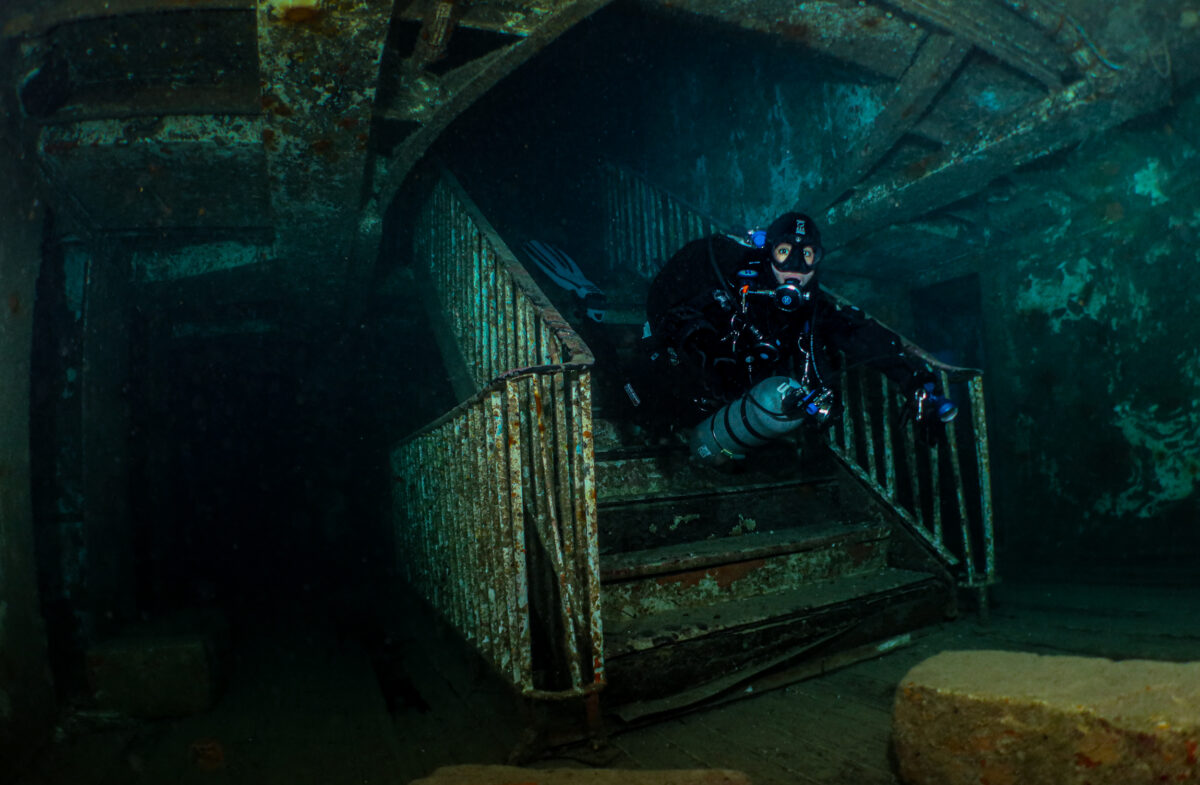
Something that drew me to marine science early on was the realisation that the ocean and the deep sea are, in many ways, the final frontiers of exploration on our globe. The vibrancy of life in the deep sea is often under appreciated, there are rich assemblages that not only survive, but thrive in the deep. These groups of organisms have fascinating adaptations to life under immense pressure. Because of its inaccessibility and other-worldliness, the deep sea has often been regarded as separate to our earth. A place that we could dump our nuclear waste, scrape away at with nets or mine without care for any of the life it supports, without any realisation that this seemingly alien landscape is as interconnected with our planet as the hills and valleys of our airy domain.
So far in my diving career I have barely skimmed the surface of our ocean descending to a maximum of 34m. This has been intentional as I was not trained to go deeper and frankly have always enjoyed the streaming beams of light that occur in the top few metres of the sea. Descending down to the gloom and cold never appealed to me and I was luckily never drawn into the bravado that can occur between some divers comparing max depths. However, something I have realised is that from a research perspective, the longer you can stay underwater and the deeper you can go the more broad and encompassing your work can become.
With this idea in mind, the clear next step for me in my diving career was into the world of technical diving. I went to Cabo de Palos in the South of Spain where I met Ricardo Constantino, a brilliant GUE instructor. We had covered theory in online sessions in the run up to the course and were then able to get straight into more practical skills and gear setup on arrival.

Twinset diving is new to me, so I had to readjust my weighting and trim after many years of single cylinder diving. I absolutely loved having such a volume of gas. Surfacing after an hour-long dive with enough gas to last another two felt not only a safer and more relaxed way to dive but also exciting for the possibilities I knew it could afford me for scientific diving.
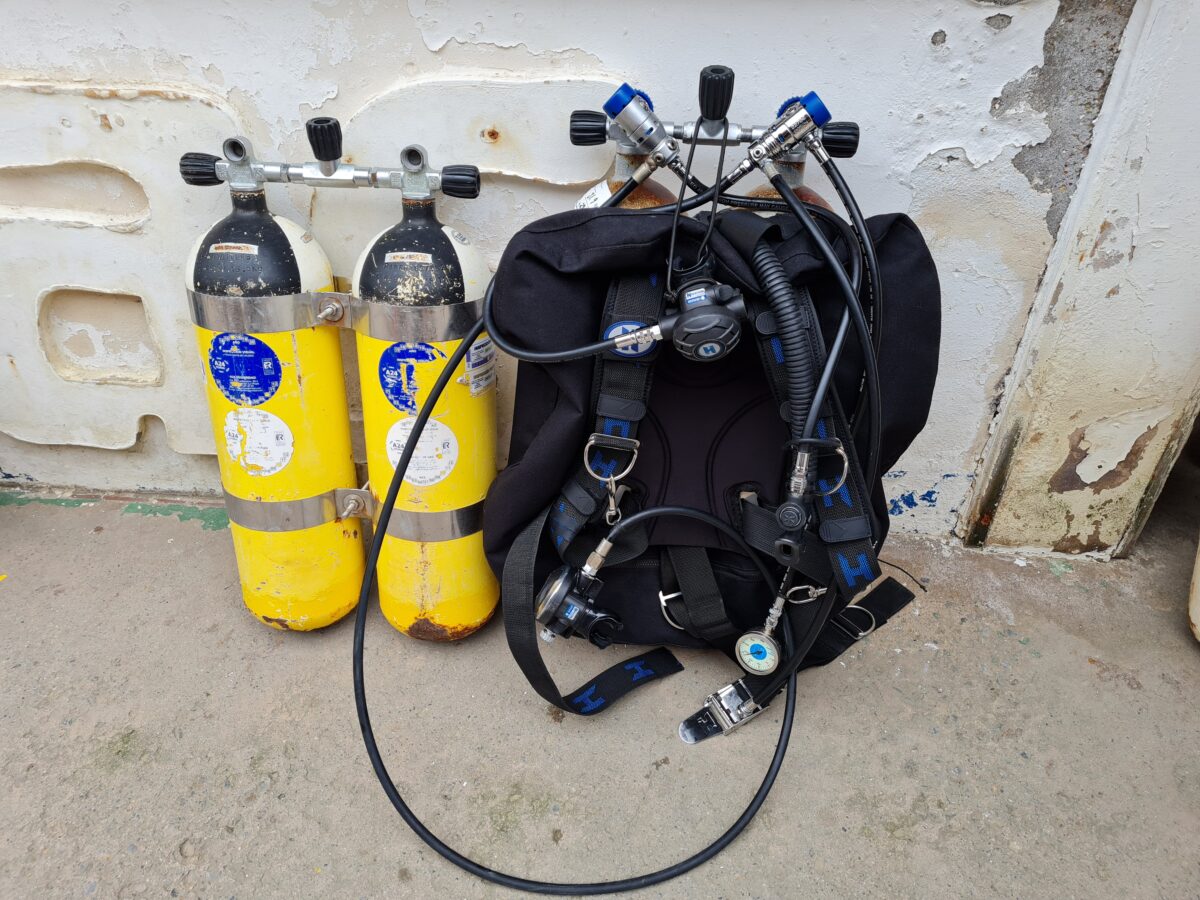
Ricardo is a phenomenal instructor, his classes are well thought out, comprehensive and engaging. As my first GUE experience, I was hugely impressed by the ethos and standards. I was delighted to finish the class with a Tech Pass.
The Cabo de Palos underwater landscape is stunningly beautiful. Due to the topography of the area the water is rich in nutrients and consequently there is a huge amount of life there. I was amazed by the sheer number and variety of fish that we saw on every dive. On our last dive in Cabo de Palos we saw a beautiful shoal of bream (Sarpa salpa) grazing in the swaying seagrass. It was one of those moments when you can almost hear the cinematic music playing in your ears as you witness the shoal moving as one.


The next step for me was to learn more about technical diving. To this end, I travelled to Malta where I met the wonderful Sarah Shaw from Techwise Malta. She took me under her wing and for two weeks she trained me in a wide range of technical diving skills. Sarah and the other Techwise staff were incredibly welcoming to me and really made me feel part of the team while I was there.
I learned so much from Sarah; how to remove and replace a stage, practising S-drills (turning off and on my twinset valves) and how to plan and complete multiple decompression stops in a variety of conditions. It was a great introduction to the world of technical diving. We would practise skills for the deeper water in the shallows first and Sarah would record us, then each afternoon we would watch back our skills and analyse them. It was eye opening to hear Sarah’s pointers for improvement. We were finessing our ability to streamline each vital step for what would be our first decompression dives.

When the time came for our deeper dives, we were in a flow where each skill felt rehearsed and well timed. Nevertheless it was still a daunting task to be the ‘Deco Leader’, with the responsibility of ensuring everyone on the dive team ascended at the correct rate and stayed at each decompression stop, breathing the correct gas to the exact minute. But, Sarah had prepared us well and everything went to plan. Afterwards we all felt a huge sense of achievement
It was wonderful to be joined on the course by Lisa, another scuba instructor, who is also beginning her journey into the world of technical diving.
I have often, perhaps wrongly, seen the technical diving industry as being male dominated and yet here I was being taught by a power-house female technical diving instructor, in an entirely female class!
By the end of the two weeks I felt perfectly comfortable in the twinset with two different gas mix stage cylinders, I had somehow gone from single cylinder diving to now having four!


After our PADI Tec Deep Course, I stayed in Malta with the Techwise team and got the opportunity to dive with a DPV (Diver Propulsion Vehicle) for the first time in my life! It is incredible fun, I flooded my mask the first time we went out on the ‘scooters’ because I was smiling so widely.
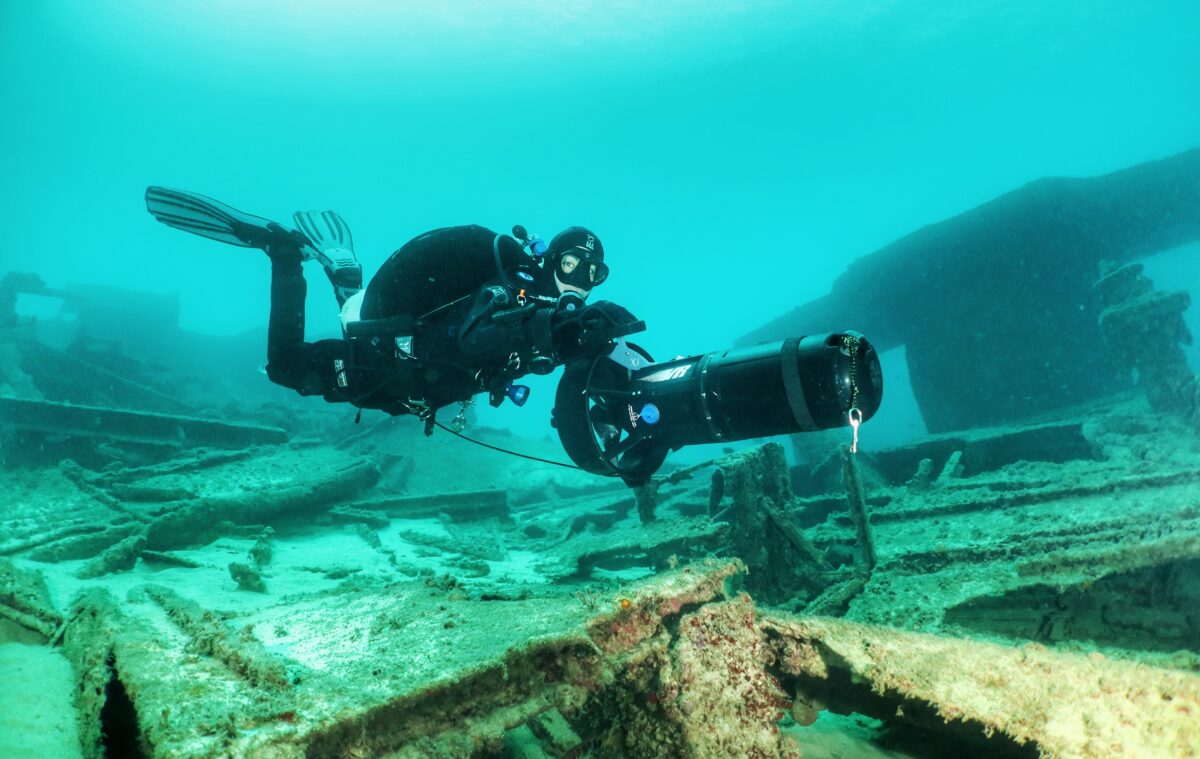
The DPVs also turned out to be a brilliant tool for pollution removal, they allowed us to cover a huge amount of distance in a short time. When we passed over marine plastic debris we would pause to pick it up before whizzing over to the next piece. When diving with neutral buoyancy, it already feels like flying but with a DPV this sensation is intensified. It felt like we were ocean going superheroes, flying over the landscape below us, removing pollution as we went.
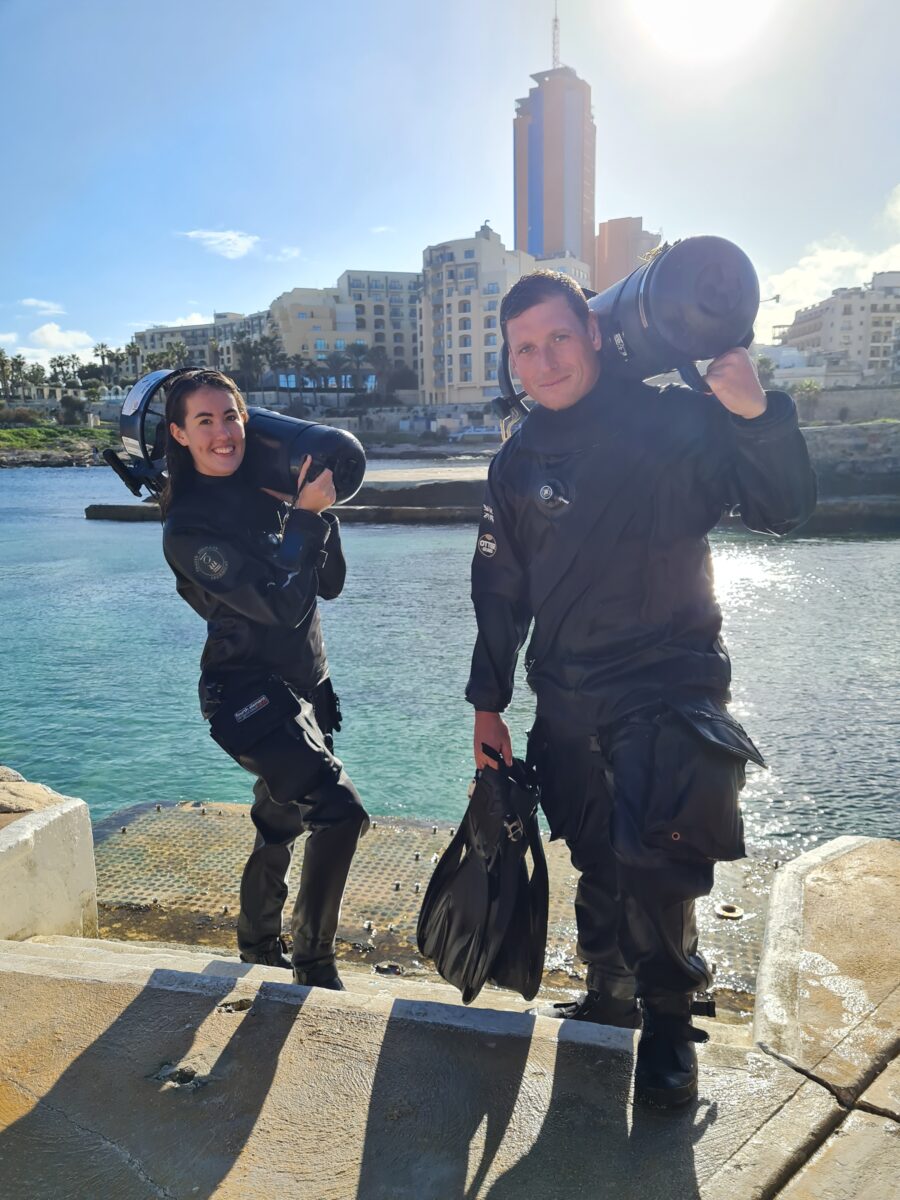
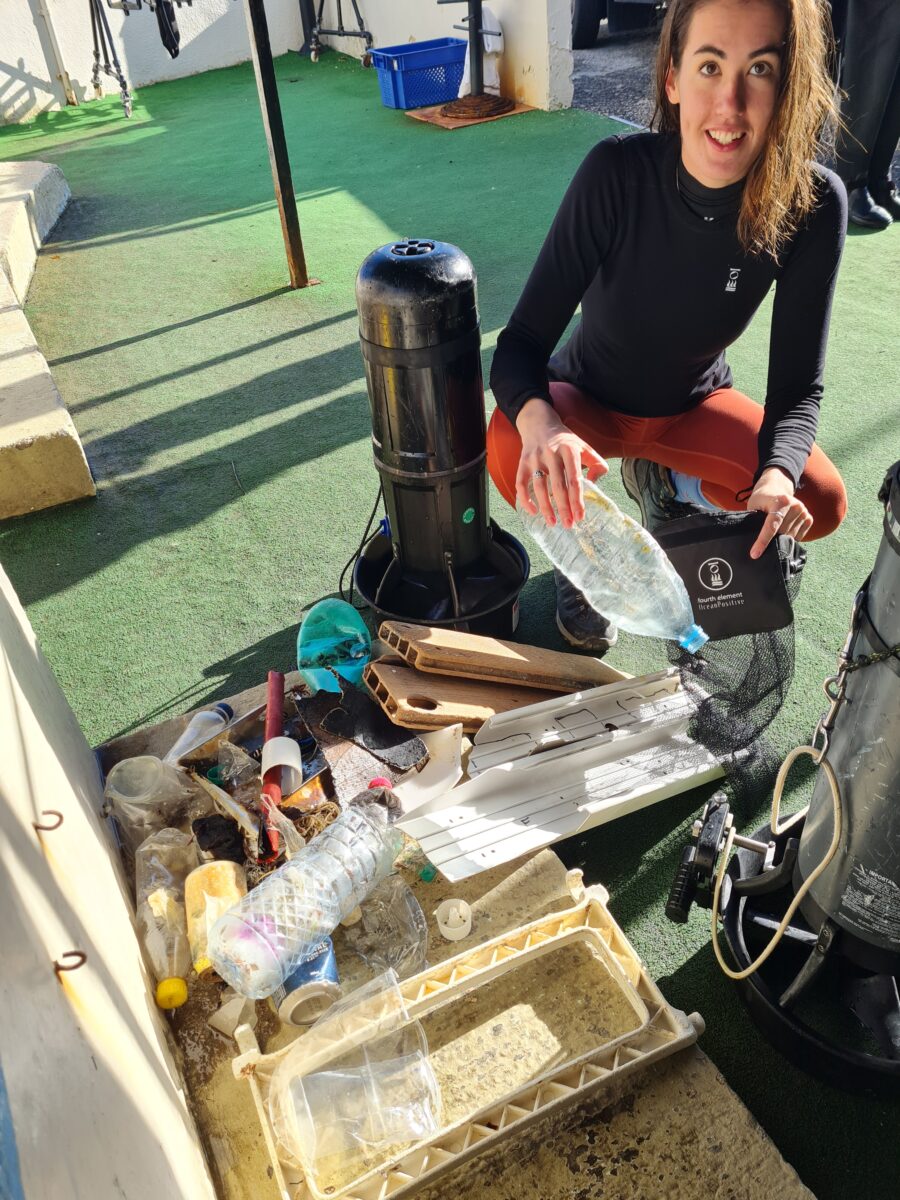
I was sad to leave the Techwise team and their home of the idyllic islands of Malta and Gozo. There are hundreds of dive sites around the islands to explore more than one could possibly get to see in just a few weeks. I am looking forward to someday going back to see my new friends in Malta and share those blue, crystal waters with them again.
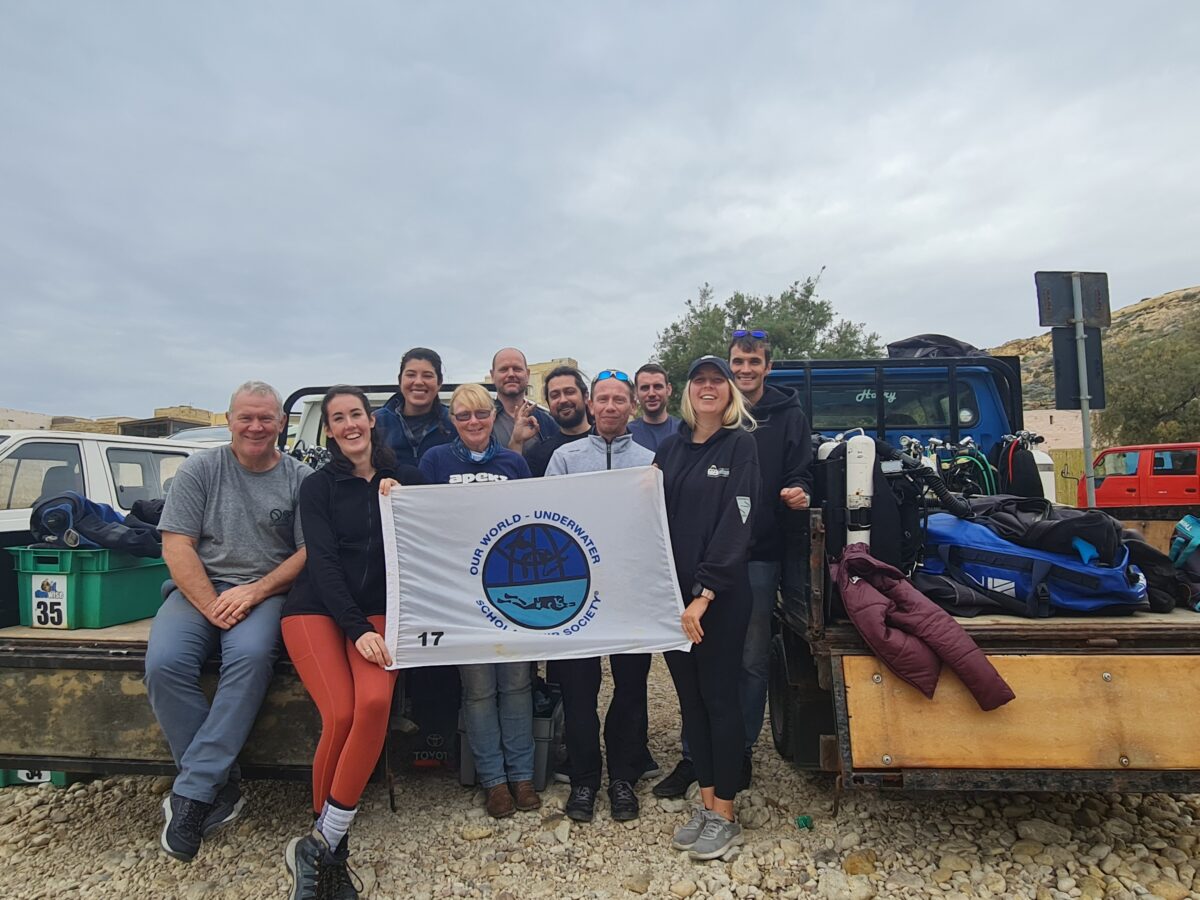
This experience was only possible due to the kind support of my instructors Ricardo Constantino, Sarah Shaw, Michael Tandy and all of the Techwise team, I am so grateful to you all for helping me a long the way with my diving journey!
Thank you also to Rolex and OWUSS for making such dreams come true. Also thank you to my incredible equipment sponsors Fourth Element, Suunto, Halcyon Divesystems, Reef Photo and Video, Nauticam and Reel Diving.
